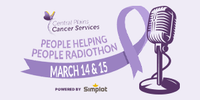The forecast isn't only useful for being prepared for the weather, but to warn you of harmful levels of UV rays.
The UV index is a reading of levels from 0 to 11 plus, of harmful sun exposure and when you need eye and skin protection.
Southern Health-Sante Sud Vice-president of Medical Services Dr. Denis Fortier says ultraviolet rays should be taken more seriously as it's a form of radiation.
"Personally, when I hear the word radiation, I get a little bit more worried. There's UVA, and there's UVB, different types of ultraviolet rays, and they hit our skin, or they penetrate our skin and do damage."
He says if a person is diagnosed with skin cancer after a fair bit of questioning, they can often relate it to multiple sunburns as a child.
"It's really important to protect our children, so they aren't as adults being faced with the possibility of skin damage or cancer. "
Fortier notes this damage can vary greatly; UVA can cause superficial damage such as the classic bright red sunburn, sunspots and wrinkles; while UVB can cause irreparable damage to cell DNA leading to skin cancers.
There are three types of skin cancers caused by UVB damage, basal cell carcinoma the most common type of skin cancer, squamous cell carcinoma, and the worst being melanoma.
"You're looking for evidence of something that wasn't there before," says Fortier, "a nodule, a thickening of the skin that isn't going away. A small sore perhaps that seems never to heal or heals and comes back, those are subtle indications that something is going on beneath the surface of the skin and maybe you should get that checked."
Fortier notes prevention is critical, wear sunscreens and avoid prolonged skin exposure in the hottest parts of the day, and if you already have a sunburn, it's much too late.











